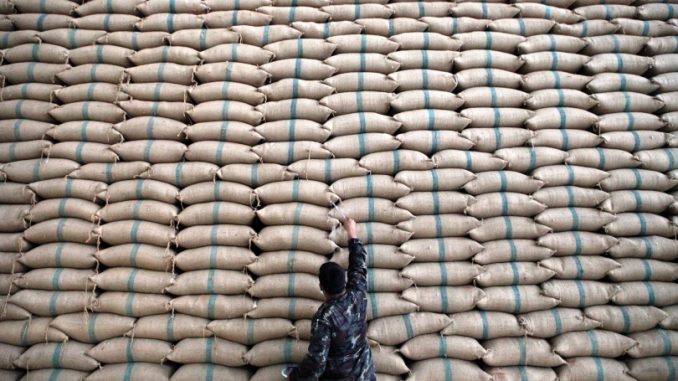
By Anil Talreja
The agriculture sector is recognised as the backbone of the Indian economy and has always received special attention in the Finance Bill. And it deserves the tag. It incorporates several areas that require coverage such as food and income security, irrigation and water conservation, soil fertility, connectivity from farm to markets, infrastructure and funding, organic value chain in production, farmer security and protection including credit facilities such as crop insurance scheme and the use of technology.

Representational image. Reuters
In each Budget, multiple announcements are made around the above areas: schemes are introduced under the office of the Prime Minister, heavy expenditure allocation is made, and incentives are granted and relaxations are announced to facilitate farm-to-market produce. Funds are also raised for specific agricultural activities and an attempt is made to bridge the economy in the rural areas with the modern world using technology.
While all of the above reflect good policy promising a sustainable growth, a more detailed report card highlighting the tangible benefits of past announcements is the need of the hour. It needs to be seen as to how much of these benefits are ultimately transferred to the farmer and whether or not his concerns are addressed.
Farmer fatalities taking place during the course of a year do not give much confidence to the common man with regards to the benefits of the schemes and incentives that are announced.
There is a need to continue with measures that aim to increase the disposable income of the farmer. The commitment is to double the income of farmers in the next four years and everything that can help achieve this target should be implemented. This will enable a farmer to prosper and increase his spending, which in turn, will lead to money coming back into the system.
A stimulus is needed for sectors that support the agricultural and farm sector such as warehousing, logistics, cold chain, and transportation, etc. The agriculture sector cannot prosper unless these support sectors are incentivised. Any announcement aimed at accelerating growth in these support sectors would be welcome. It could be tax benefits, schemes easing the procedural/compliance aspects of companies involved in these sectors or even partner with the government to fuel growth.
Additionally, several pockets that are part of the farm-to-market system need help from the government. Earlier Finance Minister Arun Jaitley had focussed on ensuring that a farmer is able to sell his produce directly to the consumer and also get good recovery. Towards achieving this, 100 percent foreign direct investment in the food marketing segment was announced in the Budget two years ago. Some of the segments that could be looked into include construction of markets (akin to APMC) facilitating farmers and consumers to come together to transact, providing a robust e-platform for farmers to sell their produce, internet connectivity in rural areas, modern payment mechanisms, etc.
Incentives for building infrastructure (roads) in rural areas should be increased. This would act as a win-win for farmers as well as the developer or initiator. Further, the government has to announce some direct-to-farmer schemes that enable farmers to take the benefit.
Post GST, consumers expected prices of commodities to drop on the hope that the benefits of credit under the GST law would be passed on to them. However, this did not happen in several cases with the result that there was a certain level of dampness in the market. The introduction of a specific regime which not only takes care of the seamless credit mechanism but also removes the compliance/filing hurdles would be welcome.
Anti-profiteering regulations have already been announced, and there could be additional announcements around these regulations in terms of their operationalisation.
Seeing the impact on the urban market, the rural market was impacted as well. It typically would take more time for the rural market to recover from the aftereffects of GST as compared to the urban market, as infrastructure and support services are inadequate in the rural markets.
Once the backbone of the Indian economy is taken care, other sectors will consequently grow and prosper. Thus, it is worthwhile to continue to bet on agriculture in order to achieve overall growth.
(The author is a partner at Deloitte India)
Source: Firstpost

Leave a Reply